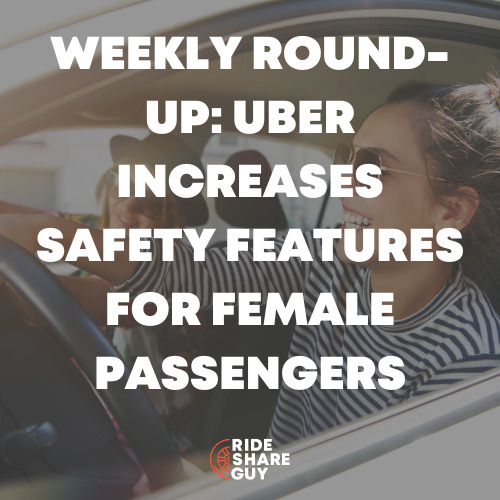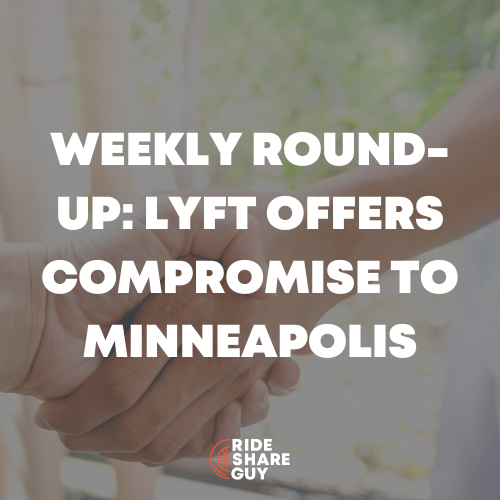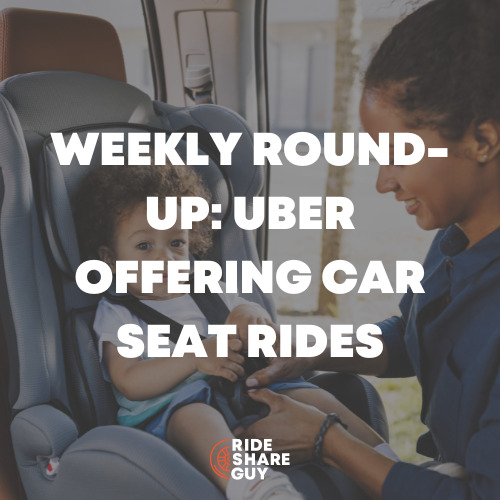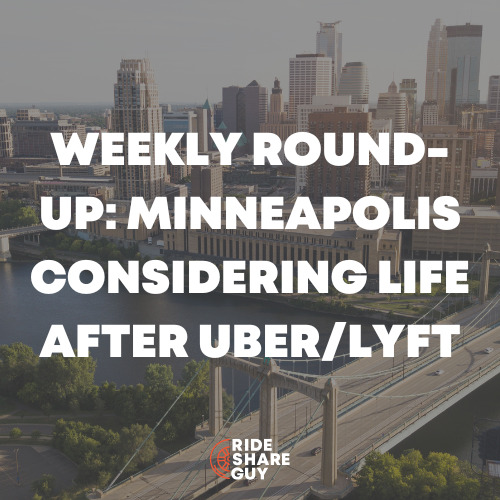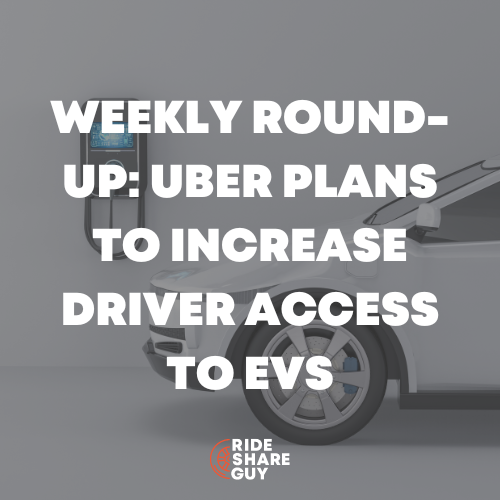Join us Tuesday 3/28/17 at 5 p.m. PST for a special Youtube Live Tax Q&A session. We will have Lisa Skelly, EA MST from TurboTax on the show to answer questions about rideshare taxes. Submit your questions here for a chance to win a free copy of TurboTax Self-Employed. You can also subscribe to our Youtube channel here and be sure to turn on notifications (instructions here) so you know when we go live.
Harry here. Today, senior RSG contributor John Ince takes a look at an interesting battle in Seattle between Uber and drivers looking to unionize. I think most drivers would agree that drivers deserve a better Uber experience, but I’m not sure if a union or another type of organization is the best way to achieve it. What do you think?
Uber’s attempt to block Seattle drivers from unionizing has failed [The Verge]
Sum and Substance: A Washington state judge put the brakes on Uber’s attempt to block the city of Seattle from implementing a landmark law allowing freelance drivers for ride-hailing companies to unionize, according to Reuters. The law still faces two lawsuits in federal court.
The law passed by the Seattle city council in a 9-0 vote back in December 2015 was a first of its kind. It allows drivers for ride-hailing apps like Uber and Lyft to unionize and collectively bargain for better working conditions, earnings, and other benefits. The bill was a victory for the App-Based Drivers Association, which had lobbied with the local Teamsters union on behalf of freelance contractors.
After its passage in December 2015, Uber and Lyft declined to challenge it outright, instead supporting a lawsuit brought by the pro-business, anti-union US Chamber of Commerce. But then in August, a judge tossed the chamber’s lawsuit, calling it premature until the city moved forward with implementation.
The Chamber has since refiled its lawsuit against the law. The business group is arguing that the measure violates federal labor laws regulating independent contractors. Another anti-union group, Freedom Foundation, has also filed a challenge against the law.
Dawn Gearhart, business representative for Teamsters Local 117, praised the judge’s ruling. “… While it’s encouraging to have favorable legal decisions, drivers are struggling for basic dignity and a living wage while Uber forces the city into court,” she added later via email. “Conditions are getting worse and drivers won’t see meaningful change until they have a voice.”
Meanwhile, Uber won’t say whether it intends to appeal the judge’s ruling, but the company did criticize the scope of the law, which only applies to drivers who complete a certain number of trips and have been driving on their respective platforms prior to the law’s January implementation.
A possible twist in all this: last year, The Verge uncovered evidence of Uber using a CIA-linked firm to investigate union politics in Seattle. Uber confirmed the project and characterized the effort as research into the city’s political landscape, emphasizing that it was not targeted at any individuals or drivers.
My Take: Last week, Uber’s PR team, including board member and media magnate Arianna Huffington, organized a PR offensive which included a 45 minute conference call with major media outlets including the New York Times. Afterward, there were a flurry of stories appearing in the press that suggested Uber was now changing its ways and taking the interests of drivers to heart. The NY Times story included the following passage, with a quote from Uber executive Rachel Holt, “Aside from internal changes, Uber said it would continue to work on improving relationships with drivers, who are freelancers that the company does not employ full-time. ‘We need to bring more humanity to the way we interact with drivers,”
That’s all well and good, but actions speak louder than words. At the very same time Holt was issuing those words, Uber was undermining her message by taking some very un-driver friendly actions in Seattle, including producing 18 podcasts that essentially amount to anti-union advertisements drivers are more or less required to listen to before they sign onto the app.
Uber has produced 18 episodes of a podcast warning drivers about the dangers of joining a union (Quartz)
Sum and Substance: SAN FRANCISCO — By the time the Teamsters starts organizing Uber drivers in Seattle next month, the ride-sharing company will have already spent a year fighting the effort.
The company has run advertisements against unionization in its app and on television, hosted meetings, and sent emails and phone calls to drivers. Its podcast for Seattle drivers, in which it hashes out arguments against joining a union, is already on its 18th episode.
“As I’m sure you know,” says Brooke Steger, the general manager for Uber in the Pacific Northwest, in episode 18 of Uber’s podcasts, “We at Uber do not believe the Teamsters can serve as a fair and effective representative for drivers.” “Brooke, I agree,” responds a driver who is identified only as “Frederick” and uses the flat, steady tone of someone who is reading a script. “As a small business owner… I don’t want to hand over my flexibility and freedom to anybody, especially an organization that has fought so hard to keep Uber driver partners off the streets of Seattle.”
Steger has throughout the podcast’s run called the prospect of a union “very, very scary,” “super scary,” and “really, really scary.”
Anti-trust laws generally prohibit unions from organizing independent contractors, but Seattle passed a first-of-its-kind ordinance in late 2015 allowing collective bargaining of Uber and Lyft drivers. Teamsters local 117 got final approval March 3 to organize independent drivers who work for apps or taxi companies. Uber will now be required to hand over contact information for its drivers to the organizers, who have 120 days to gather support from those who joined the platform before Oct. 20, 2016, and have taken at least 52 rides within a three-month period.
“Companies are using the same old tricks,” says Dawn Gearhart, who works as a coordinator with the Seattle Teamsters chapter, but with Uber, privately valued at $68 billion, it’s “to a $70 billion extent.” Uber’s spending to fight the Teamsters, while unknown, appears large. The company even ran a television commercial during a Seattle Seahawks game warning against unionization. “I’ve never seen an anti-union podcast before. I’ve never seen anything about the Teamsters during a national football game,” Gearhart says.
Uber’s effort vastly outguns that of the union. “We have three staff people max, including myself, who are working on this,” says Gearhart.
The business model for Uber and Lyft depends on treating drivers as independent contractors, which allows the companies to pay exactly the number of drivers needed to handle passengers at any given moment without paying those waiting around for rides. Independent contractors are not protected by most labor laws, such as the minimum wage.
Meanwhile, Uber and its allies continue to fight Seattle’s ordinance. On January 17, Uber filed a petition to stop the implementation of the rules the city set for independent drivers’ collective bargaining efforts–calling the rules and the process used to create them “arbitrary and capricious.”
My Take: A strong union presenting the unified demands of hundreds of thousands of Uber drivers has to be one of the top nightmare scenarios for Travis Kalanick. If not, then why is Uber spending so heavily on this kind of campaign to discredit the Teamsters and unions in general?
The lengths Uber is going to are highly creative and unprecedented. Here’s just one of Uber’s creative tactics, according to MSN / WSJ, “Full-time Uber driver Don Creery, 63, who supports joining a union, said on a recent slow Sunday afternoon the company offered a guaranteed $35-per-hour rate to lure him and others away from a scheduled union organizing meeting.”
Uber haters have a new battlefield: the App Store [Mashable]
Sum and Substance: Things just keep getting worse for Uber. With #DeleteUber trending once again following allegations of sexism from a former employee, disgruntled users are taking to the App Store to vent.
Uber’s app currently has an abysmal 1.6-star average rating in the U.S App Store, despite its rank as the No. 10 app overall, according to app analytics company App Annie. Though its lifetime rating stands at 3.7, it’s received 3,941 one-star reviews in the last 30 days, pushing down its overall score.
Many of the poor ratings appear to be directly tied to the company’s policies, rather than the performance of the app itself. Numerous users cite the allegations of sexism and harassment made by former engineer Susan J. Fowler, whose blog post detailing her time at Uber went viral over the weekend.
In the past 30 days alone, 993 reviews, averaging just 1.1 stars, cite “Trump” somewhere in the review, according to App Annie. Uber’s app appears to be faring slightly better on Google Play, where it has a 3.6-star average for the past 30 days. Android users also have their fair share of negative comments about the sexual harassment allegations and the company’s perceived ties to Trump. More than 1,000 overwhelmingly negative reviews on Google’s Play Store mention Trump by name.
Uber is far from the first app to have its ratings suffer as users take to app stores to air their grievances. Facebook encountered similar issues when it first began forcing users to download the standalone Messenger app, which caused the app to skyrocket to the No. 1 spot while earning it a 1-star average review.
My Take: One can’t help but musing on the irony that Uber – the company that intimidates employees and drivers with a harsh rating system– is failing miserably with an overall rating of 1.6 in the last 30 days in the app store. If Uber the company was a driver, it would be de-activated.
But that’s not going to happen. Why? Because by and large, most passengers still appreciate the company and what it provides for them – cheap, efficient transportation that beats the competition. Despite all the negative news about Uber lately, my takeaway from the article is that Uber is still #10 overall in the app store.
Anecdotal evidence suggests that not that many passengers pay all that much attention to the news – they’re more focused on getting from point A to point B as quickly and cheaply as possible. On that score, Uber is still doing pretty good – thanks to drivers who still have their nose to the grindstone. (See article below)
Actually, Uber’s PR disasters aren’t that great for Lyft [Recode]
Sum and Substance: The first leg of 2017 has been a public relations disaster unlike any other in Uber’s six or so years of existence — and for the ride-hail behemoth with a history of public scandals, that’s saying something. So it stands to reason that Lyft — the perennial runner-up to Uber — should benefit from its competitor’s perceived loss.
There isn’t a penalty for switching services for either riders or drivers, after all. Drivers are independent contractors and riders don’t typically buy into any contract to use either platform, unless they’ve bought one of the short-term, flat-rate passes both companies are now offering. Even then, it’s fairly easy to ditch either company once those passes expire. That said, though it stands to reason it would, Uber’s current mess isn’t necessarily a gift for Lyft.
Why? For one thing, Uber’s marketshare is huge. While the number of deleted accounts is more than the oft-maligned ride-hail company — now valued at close to $70 billion — has ever seen, sources say Uber typically gets around 200,000 new accounts added in one week in just a few of its markets. Second, ride-hail platforms are two-sided marketplaces. Drivers have long complained of some of Uber’s practices, like its lack of a tipping option and its high commission rates. More often than not, protesting drivers target their complaints at Uber, not Lyft. That’s all to say, drivers have tried to ditch Uber in favor of other services for years, but it hasn’t worked.
Because drivers, who often drive for multiple apps at a time, will typically take the first ride request they get or will continue to use the app that has the least downtime between rides. That means drivers will go where the riders are. Riders, in turn, will use the service that has the shorter wait times and cheaper prices. In other words, riders will go where there are drivers.
It’s a constant balancing act for ride-hail companies, which always have to ensure there aren’t too many drivers and too few riders or vice versa. And Uber has gotten good at doing just that. The company has some of its U.S. markets — like San Francisco — mapped down to a one-block radius, and is able to ensure there is just the right amount of supply for the demand. That’s why riders and drivers have stuck with the service in the past, even if it meant giving money to a company they don’t agree with.
What’s adding to the effect is Lyft’s lack of name recognition. Lyft isn’t as well known as Uber is in places outside of New York City, San Francisco, Los Angeles and a few other markets. To mitigate that, the company recently invested in a series of TV spots and has even tapped reality stars like Scott Disick of “Keeping Up With the Kardashians” to promote its service.
But it’s unclear how much of a boon to the company’s business that has been as of yet. It’s not impossible to make some headway against Uber. In New York City, Juno, a ride-hail app started by Viber co-founder Talmon Marco, performed one million rides in a matter of months. The company — which launched in the city in May — performed 20,000 rides a day by September. Compare that to Lyft’s 40,000 rides a day in that month.
Juno’s pitch was simple: It was good for drivers and cheaper for riders. The company only took 10 percent commission off each ride and charged riders 35 percent less than its competitors. But the model, unsurprisingly, was unsustainable. By September, the company had dropped discounts down to 20 percent. And Marco told Recode it’ll likely do away with the discounts altogether. Today, Juno only offers a 10 percent discount to its riders.
Lyft can use — and in the past has used — promotions and incentives to lure riders and drivers to its platform. But it can’t be the company’s long-term strategy and also can’t be done in lieu of improving the efficiency of their marketplace. So Uber’s two months from hell may not be a nail in the coffin for the company.
My Take: I tend to agree with Harry on this one – most passengers really don’t pay attention to the news and few are aware of any of the specifics of the stories that are surfacing. Uber’s initial pitch to investors – ridesharing was and is an industry that exhibits network effects – was and is still valid. The larger the size of your network, the more valuable your network. Lyft (and Juno’s) networks are still too small for drivers (and passengers) to switch – except in select markets like San Francisco and others where people are more aware of what’s really going on behind the curtain.
Readers, what did you think of this week’s round up? What do you think of Uber’s tactics against Seattle drivers unionizing, and is unionizing the right step for drivers?
-John @ RSG
Save
Save
Save

